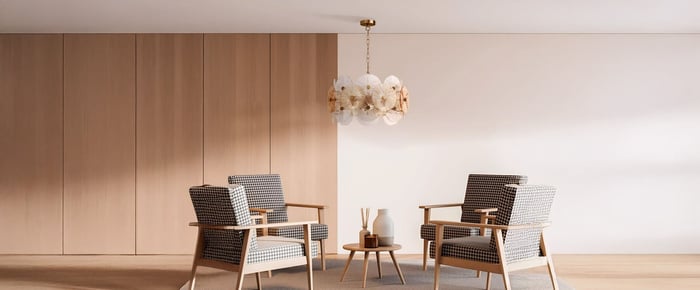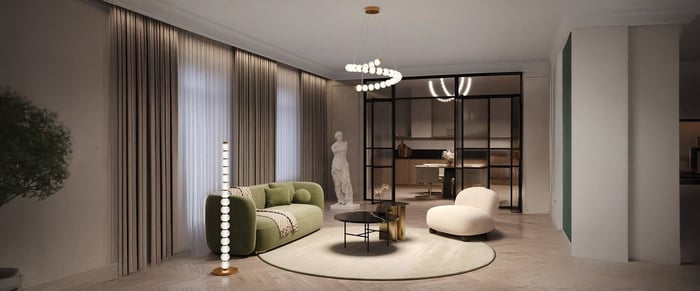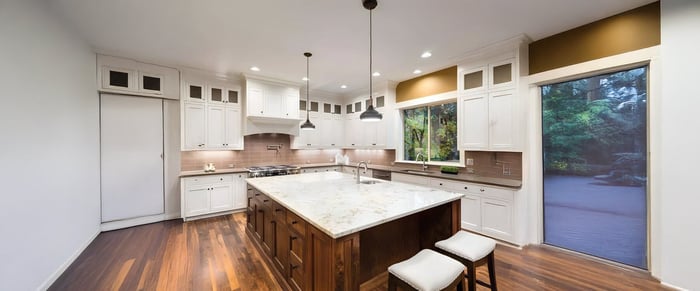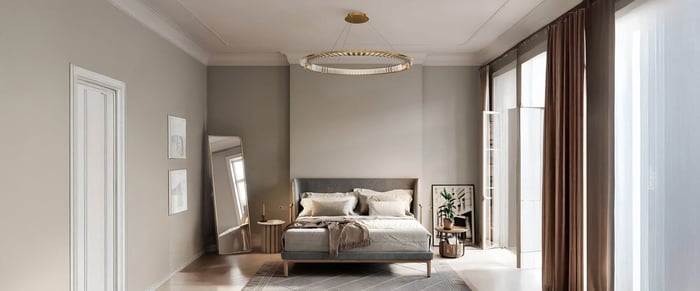Introduction
Chandeliers are more than just functional light sources; they are statement pieces that can transform and define the character of any room. Their captivating designs and ability to set the mood make them a focal point in many spaces, from grand dining rooms to cozy entryways. However, choosing the perfect chandelier involves much more than selecting a design that catches your eye. Factors such as size, ceiling height, style, materials, and placement all play an important role in ensuring that the fixture complements your space both aesthetically and functionally. Careful planning is key to creating the desired ambiance and maximizing the impact of your chandelier.
Here's a comprehensive guide to everything you need to know before bringing one into your home.
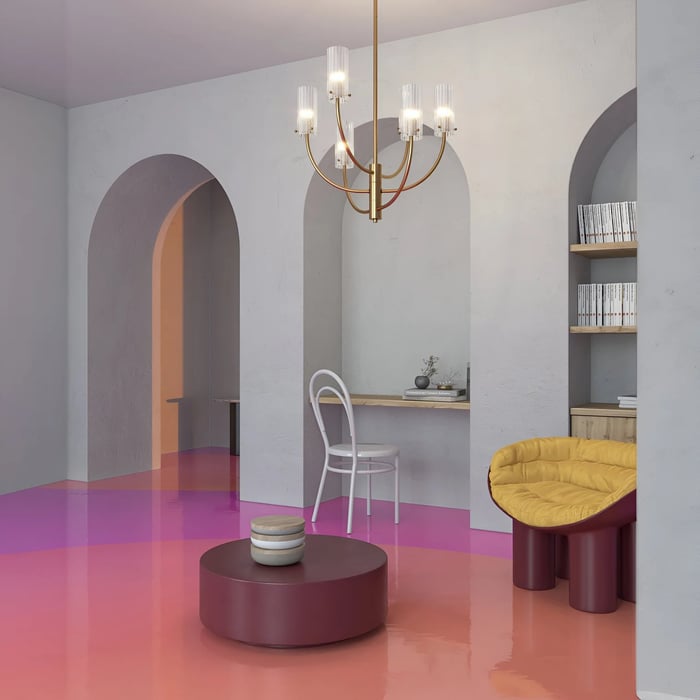
1. Finding the Right Size for Your Chandelier
Choosing the right size chandelier is one of the most important steps in ensuring it complements your room. A chandelier that is too large can overwhelm the space, while one that is too small might not make the impact you’re hoping for. The general rule of thumb for determining chandelier size is to measure the room’s length and width in feet, add those numbers together, and convert the sum into inches.
Ceiling Height Considerations
Ceiling height is another critical factor when selecting a chandelier. If you have high ceilings, you have the flexibility to choose more elaborate and larger designs. However, rooms with standard or lower ceilings require more consideration to avoid the chandelier appearing out of place.
General Guidelines: In rooms with standard 8-foot ceilings, the bottom of the light should hang at least 7 feet from the floor. For taller ceilings, consider adding an additional 3 inches of chandelier height for every foot of ceiling height. In dining rooms, this should typically hang 30 to 36 inches above the tabletop for optimal effect.
Low Ceilings: If you have a room with low ceilings, consider a flush or semi-flush mount light that sits closer to the ceiling, providing a chandelier-like effect without taking up excessive vertical space.
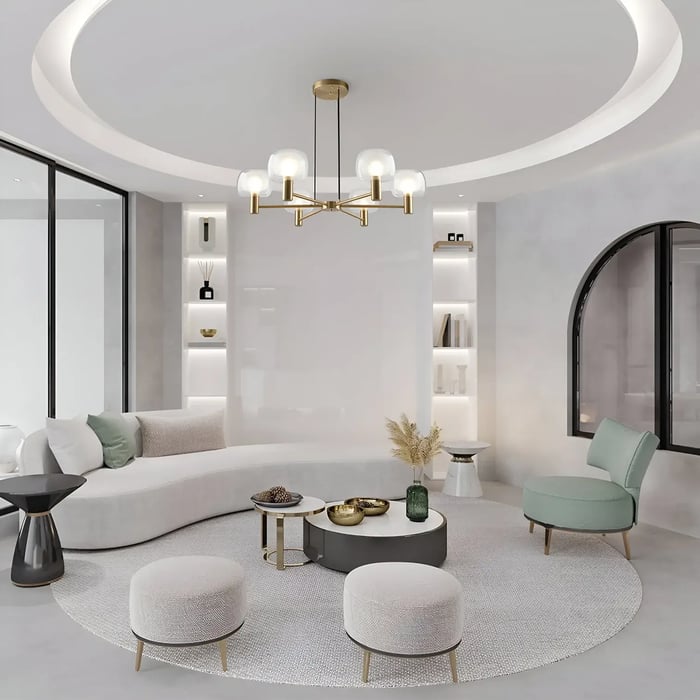
2. Strategic Placement for Maximum Impact
Dining Room Chandeliers: Above a dining table, the fixture should be approximately one-half to two-thirds the table’s width for balanced visual impact. Consider pairing a classic design with semi-flush lights or complementary suspension lights to achieve a layered lighting effect in larger spaces. The fixture’s height should allow for clear sightlines and unobstructed conversation while providing ample illumination for dining activities.
Entryways and high-ceiling areas: In grand entryways, a large, eye-catching light fixture can create a memorable first impression. Opt for oversized designs that draw attention, or consider combining with circular linear lights to enhance the decorative appeal and create additional visual interest. Placing the light fixture in line with windows can create a stunning view from outside, offering a warm and inviting welcome.
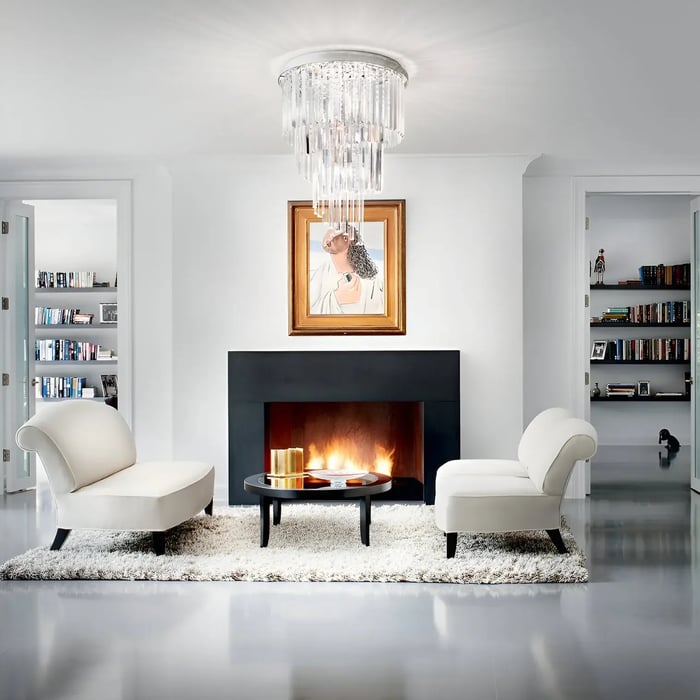
Living Rooms Chandeliers: In living areas, placing a striking light fixture above a central seating arrangement can anchor the space and add a touch of sophistication. Consider installing complementary wall sconces or floor lamps to create balanced, layered lighting that enhances the room’s ambiance. If the living room has high ceilings, a multi-tiered or cascading design can create a dramatic effect.
Bedrooms Chandeliers: Adding a decorative fixture above the bed can serve as a bold focal point. Ensure it’s mounted high enough to allow for clearance and does not obstruct headspace. In bedrooms with a lower ceiling, a semi-flush or flush-mount design may be a better fit, adding style without overwhelming the space. For added warmth and balance, incorporate table lamps or pendant lights on either side of the bed.
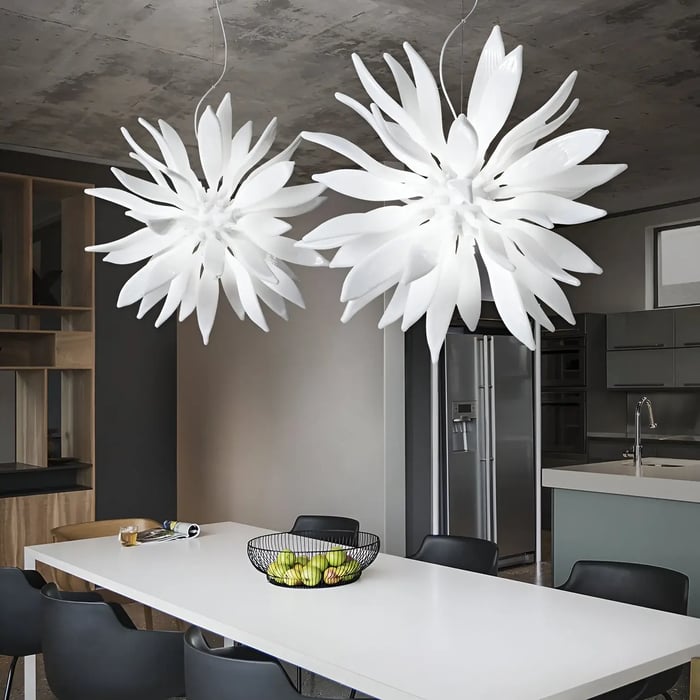
Kitchen Chandeliers: Placing a fixture over an island or breakfast bar can offer both style and functional lighting for meal prep and dining. Consider using suspension lights or linear lighting for a modern, streamlined look that complements other kitchen fixtures. For an open-concept kitchen-dining area, ensure the designs work together to create visual cohesion.
Bathroom Chandeliers: In larger bathrooms, placing a decorative fixture over a freestanding bathtub can add an element of luxury and relaxation. Ensure the fixture is moisture-resistant or designed for use in humid environments. Pairing it with wall sconces or recessed lighting around mirrors creates a balanced, practical lighting scheme.
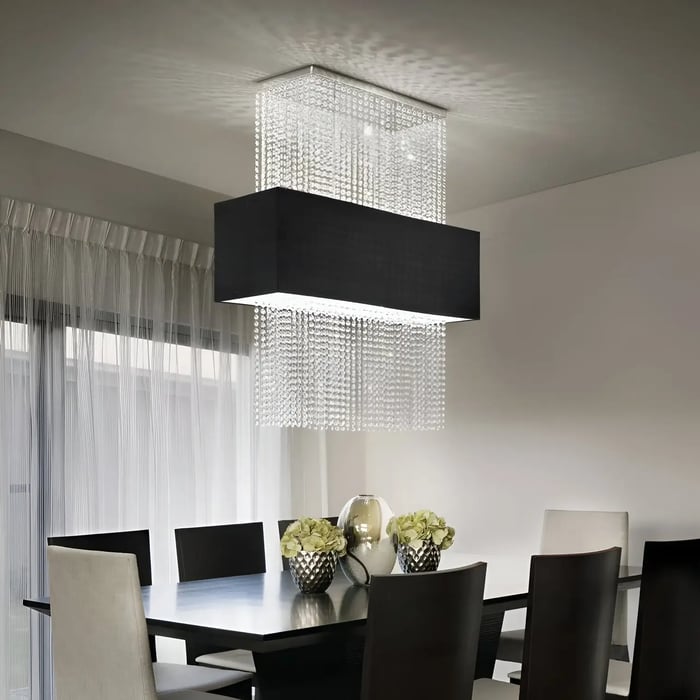
Style and Aesthetic Choices
Chandeliers come in a variety of styles, making it easy to find one that suits your home’s aesthetic. Here’s how to choose the best fit:
Classic Designs: Crystal Chandeliers are timeless and bring elegance to any space. Match them with circular linear lights for a refined, cohesive look. Victorian-inspired designs add a touch of classic charm, ideal for traditional interiors.
Modern Chandeliers: For contemporary homes, consider metal, glass, or minimalist chandeliers. Complement these with straight or spiral linear lights to create a unified appearance. Metal finishes like matte black or brushed nickel offer a modern vibe.
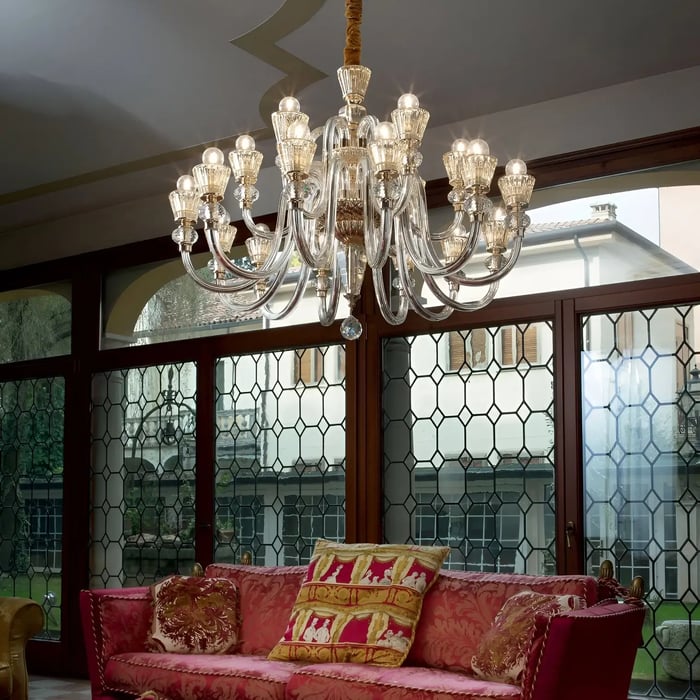
Traditional Chandeliers: When selecting a traditional chandelier, consider designs that incorporate intricate details, classic materials, and elegant craftsmanship. Traditional chandeliers often feature ornate metalwork, crystal accents, or decorative candle-style lights, creating a timeless ambiance that complements formal dining rooms, grand foyers, and classic living spaces. They bring a sense of refined luxury and warmth, enhancing traditional interiors with their stunning presence. For a more cohesive look, pair traditional chandeliers with wall sconces or complementary table lamps to create layers of light and depth.
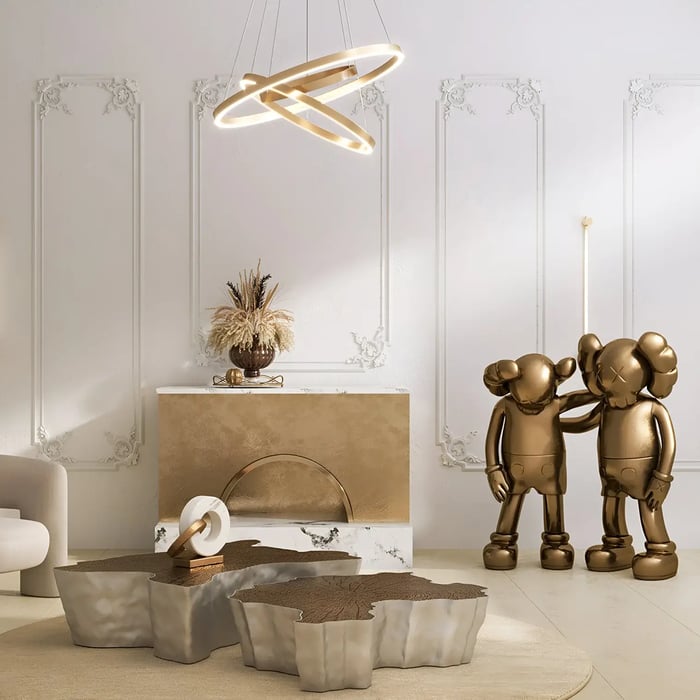
3. Energy Efficiency and Bulb Choices
Chandeliers with LED bulbs are energy-efficient and long-lasting. LEDs consume less power, reducing electricity bills while contributing to a greener planet.
Eco-Friendly Solutions: When possible, look for chandeliers and linear lights that are compatible with energy-efficient bulbs. This is especially important for spaces with multiple fixtures.
4. Weight and Installation
Fixtures made from heavy materials like crystal, metal, or wood can weigh significantly more than standard light installations. This is especially true for modern chandeliers and crystal chandeliers, which often feature intricate and multi-layered designs. Before purchasing, it’s important to assess whether your ceiling structure can handle the weight. A weak or insufficiently supported ceiling may pose safety risks, particularly with large or elaborate fixtures. Evaluating the structural integrity of your ceiling may require a professional inspection, especially in older homes.
For complex installations, it’s advisable to hire a licensed electrician. Professional installation ensures that the fixture is securely mounted and safely wired. Large or multi-tiered designs, like spiral linear lights, may require additional bracing to evenly distribute their weight. Reinforcing the mounting point with heavy-duty brackets or other support mechanisms can help prevent structural damage over time.
Consider maintenance accessibility when installing heavy fixtures. Incorporating a pulley system or using adjustable rods can make cleaning and bulb replacement significantly easier, particularly for fixtures hung from high ceilings. This setup helps ensure that your fixture remains a dazzling centrepiece while maintaining safety and convenience.
5. Maintenance and Cleaning
Chandeliers require regular cleaning to maintain their visual appeal and optimal light output. Dust, dirt, and other debris can quickly accumulate on delicate surfaces. For intricate modern chandeliers, cleaning can be time-consuming and may involve dismantling individual pieces, such as crystal drops, for a thorough wash.
Simplified designs, such as those with smooth metal or glass surfaces, are generally easier to clean. Regular dusting with a soft cloth or specialized duster can help minimize build-up. Consider the placement of your chandelier - fixtures installed near kitchens or high-traffic areas may require more frequent cleaning due to increased exposure to grease and grime.
Preventative maintenance is also crucial for extending the lifespan of your lighting. Periodically check the fixture for signs of wear, loose screws, or electrical issues, and address them promptly to avoid safety hazards.
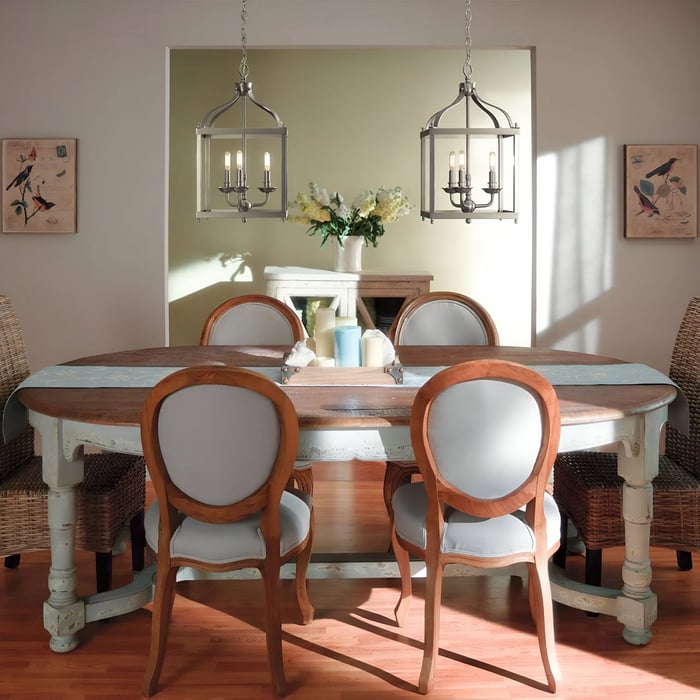
6. Budgeting for Chandeliers and Lighting Fixtures
Setting a budget before purchasing a chandelier is essential. Prices can vary widely based on factors like size, material, design complexity, and brand reputation. Crystal chandeliers and high-end designer fixtures often command a premium price. Be sure to account for additional expenses such as professional installation, electrical work, and any required structural reinforcements. Researching sales, discounts, and manufacturer promotions may also help you secure a high-quality fixture at a more competitive price.
Conclusion
Choosing the perfect chandelier can transform any room, turning it into a space of elegance, warmth, or modern sophistication. From assessing your ceiling's structural integrity to choosing the right materials and styles that fit your decor, the process can be both exciting and rewarding. With thoughtful planning and attention to detail, a lighting can serve as a stunning centrepiece, enhancing your home’s ambiance for years to come. By balancing style, practicality, and budget, you can achieve the perfect blend of form and function in your lighting choices.
